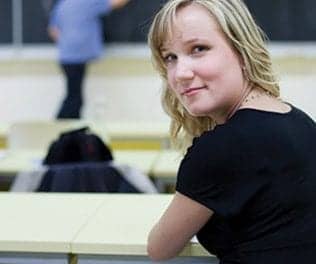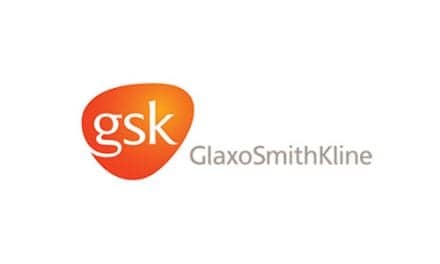 |
The telephone rang at 3:20 am, and you knew it was the sleep center calling. “Hello,” said the shaky voice on the other end. “The patient in room 2 just coded and died.” You are, needless to say, awake and on your feet in a second.
The patient had arrived at the sleep center for a routine polysomnogram (PSG) following a lengthy hospital stay in which he had been treated for exacerbation of chronic obstructive pulmonary disease (COPD), cardiomyopathy, systemic hypertension, and coronary artery disease. His history also included excessive daytime sleepiness, snoring, and possible apnea.
During his hospitalization, the physician had placed him on empiric bilevel therapy with an inspiratory positive airway pressure (IPAP) of 10 cm H2O and expiratory positive airway pressure (EPAP) of 5 cm H2O at night to reduce his CO2 level and increase oxygenation. This would also reduce the work of breathing. According to the respiratory therapist handling his care, he had resisted the therapy at first because of the pressure and the full-face mask he was required to use in the hospital. However, he had gradually become accustomed to bilevel PAP and even looked forward to using it at night. He was using 2 L of oxygen 24 hours per day.
Because of insurance regulations, the patient could not go home with bilevel PAP, and a PSG was needed to document and support the need for PAP therapy. The sleep center was notified, and a PSG was scheduled following his release from the hospital.
Procedure: Cardiac Emergencies
I) Staff Qualifications
A) Current advanced cardiac life support (ACLS) certificate or basic life support (BLS) certificate.
B) Yearly review of procedures.
II) Arrhythmias
The following will be noted in the patient record:
- Multifocal premature ventricular contractions (PVCs);
- Frequent PVCs and bigeminal PVCs;
- Superventricular tachycardia (SVT);
- Ventricular fibrillation;
- Atrial fibrillation; and
- Bundle branch block.
III) Dangerous Events
The medical director will be notified for the following:
- All occurrences of five or more PVCs per minute;
- Groups of two, three, or more PVCs in runs; and
- Multifocal PVCs.
IV) Life-threatening Events
A) The following events are considered life threatening:
- Ventricular tachycardia;
- Ventricular fibrillation;
- Cardiac arrest; and
- Respiratory arrest.
B) Dial 911 to activate emergency medical services (EMS)
- The EMS dispatcher should be given detailed information regarding building entrance and patient location.
C) Unlock main entrance to the building.
D) Emergency life-support measures (cardiopulmonary resuscitation [CPR]) will be initiated.
- Emergency airway kit located in the control room.
- Automatic external defibrillator (AED) located in the pulmonary laboratory.
E) After EMS arrives and assumes care:
- Notify the medical director.
- Notify the department manager.
V) Documentation
A) All care pre-events and post-events will be documented chronologically by the technologist or technician responsible for the patient’s care.
B) All interventions with next of kin, EMS, or civil authorities shall be documented.
VI) Notifications
The medical director or department director will notify:
- The patient’s next of kin or guardian;
- The patient’s primary care physician;
- Coroner’s office, if necessary; and
- Mortuary service, if necessary.
When the patient arrived, he was placed in a bedroom and allowed to settle in, watching the sleep center video and chatting with the technologist about PAP therapy. The technologist did a standard PSG hookup and, because of the patient’s low oxygen saturation level on room air, the recording was started on oxygen at 2 LPM. Everything during the night was routine and quiet. The technologist noted that the patient had light to moderate snoring with mild respiratory events and occasional premature ventricular contractions .
The first REM period occurred late, just after 2:15 am, and lasted for 18 minutes before an arousal when the patient suddenly went into ventricular fibrillation. Following the arousal, the registered technologist, with 19 years of experience, waited for the arousal to subside and noticed that she had lost ECG. She went to the room to check the patient and replace the lead. She found him unresponsive and not breathing. In 19 years of working in sleep medicine, she has never had this happen.
What to do
This is the worst nightmare of any sleep technologist. It is bad enough in a hospital-based sleep laboratory or center, but doubly worse if you are off campus or freestanding. Every accredited center has policies and procedures for staff to follow in the event of a patient emergency, but few of us ever expect to have to follow those procedures because such emergencies are rare.
The technologist and technician at the center that night knew what to do. They not only followed sleep center policy, but they kept level heads and did all they could for the patient. Because the center had a good plan, everything that could be done was done.
But what if this had happened at your facility? Do you know what to do in an emergency? Here are some simple tips to follow:
First, ask yourself the following questions: Who do I notify? What do I do? Do we have emergency equipment such as oxygen, an automatic external defibrillator, a resuscitation bag, and a cardiopulmonary resuscitation (CPR) backboard? If you call 911, how do paramedics get into your center? Who notifies next of kin? If the patient dies, who takes charge of the patient’s body?
Second, have a written plan in your policy manual that covers the little details that may come up. If you have a plan, review it for updates. Try to plan for the unexpected. (See the sidebar at right, “Procedure: Cardiac Emergencies” for an example.)
Third, be sure your center’s staff is completely familiar with the policy and procedures for emergencies. Just like a disaster drill, go over the plan one step at a time. Quiz the staff on how they would handle things and on where equipment and contact phone numbers are kept. Walk through the plan. Be sure your staff knows where all equipment is located and how to use it.
It never hurts to have yearly classes to cover your plan and present a refresher on how to use your emergency equipment. Hands-on training will yield a high memory-retention rate and will increase the confidence of your staff in their ability to use the equipment. Be sure everyone is up to date with CPR training.
Finally, if you are a manager, get into the sleep center as quickly as you can in an emergency. Do not expect your techs to carry the total burden. Be supportive, and remember that your staff has just gone through a very frightening and stressful experience. There may be administrative questions that they will be unable to answer, as well as duties that you will need to attend to. It is better to make apologies than to make excuses.
Henry Johns, RPSGT, is director of sleep and respiratory services for Pulmonary & Sleep Associates of Topeka, Kan. He has worked in sleep medicine for more than 18 years (and more than 35 years in respiratory therapy). For further information, contact [email protected].








